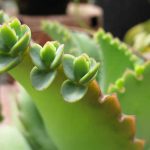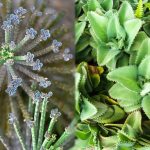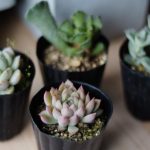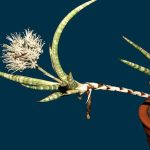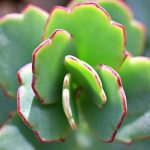Are you considering welcoming a mother of thousands plant into your indoor garden? These plants have gained popularity for their hassle-free care. Let’s explore all the essential information you need to know about this trending succulent.
Kalanchoe Daigremontiana, known as Mother of Thousands or Devil’s Backbone, belongs to the Kalanchoe genus. Originating from Madagascar, this plant is a unique marvel with most of its flora being exclusive to the island. Despite this, Mother of Thousands is easily accessible and simple to cultivate.
This charming succulent not only thrives with little effort but is also remarkably easy to propagate. Its name is well-deserved as it rapidly produces countless offspring around the edges of its leaves. As a result, a container of these plants can look stunning, but when planted outdoors, it might become invasive, especially in zones 9-11, where it can overtake native vegetation.
Let’s dive into the realm of Kalanchoe Daigremontiana and discover the ins and outs of caring for this delightful and low-maintenance plant.
Mother of Thousands Plant Overview
|
Plant Type
Succulent
Season
Winter
Pests
Aphids, Mealybugs, Scale
Family
Crassulaceae
Exposure
Bright Indirect Sunlight
Diseases
Root Rot |
Genus
Kalanchoe |
Plant Spacing
½” minimum
Maintenance
Low
Species
Daigremontiana
Planting Depth
Surface Level
Soil Type
Well Draining, Sandy
Native Area
Madagascar
Height
18”-36” tall
Plant with
Succulents
Hardiness Zone
9-11 (Houseplants elsewhere)
Watering Needs
Low
Attracts
Hummingbirds


Mother of Thousands, previously known as Bryophyllum or Daigremontiana, now falls under the Kalanchoe genus.
Among the Kalanchoe genus, some species offer beautiful, long-lasting flowers in vibrant colors, perfect for hot and dry conditions, making them ideal garden border plants.
Despite being flowering plants, K. daigremontiana’s main appeal lies in its succulent nature, thriving indoors as houseplants with minimal care as long as they receive adequate sunlight.
While Kalanchoe x laetivirens shares a similar name, this guide will focus solely on highlighting the unique features of K. daigremontiana and some noteworthy hybrid variants.
Leaf Formations
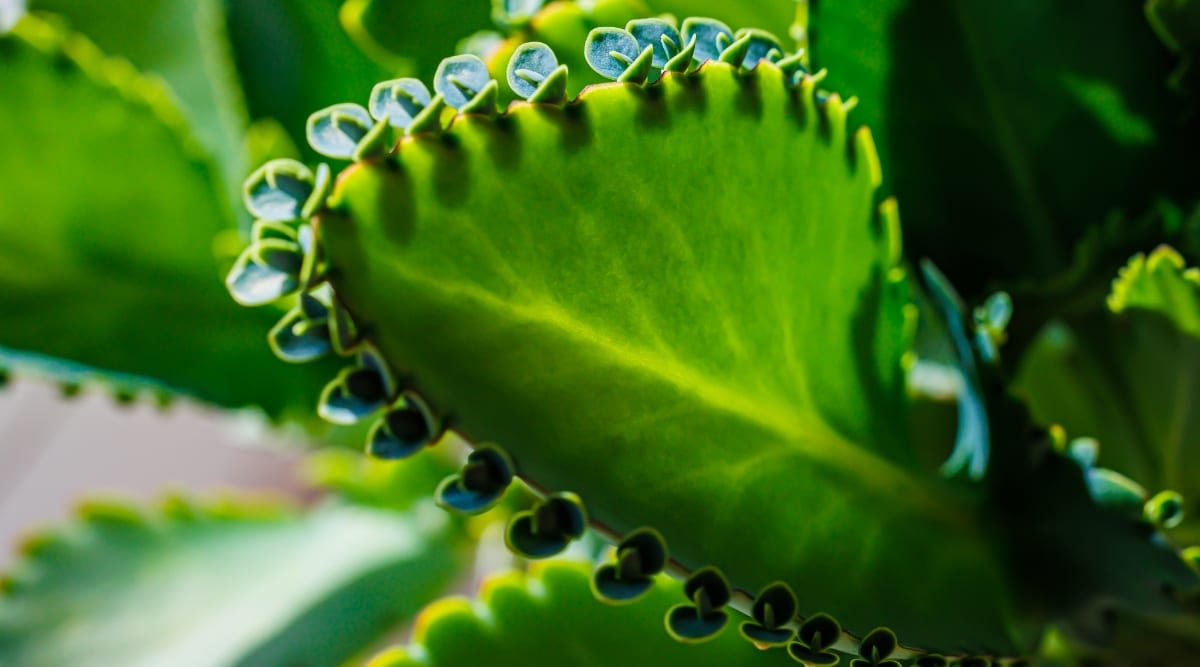

K. daigremontiana boasts large, serrated leaves of vibrant green color, embellished with tiny plantlets along the edges, making them highly attractive.
While this plant can reach heights of up to 3′, most usually grow to around 18″-24″, with taller growth resulting in a less appealing appearance that can be easily remedied with minimal care.
One of the plant’s standout features is its numerous tiny plantlets that detach from the mother plant upon the lightest touch, rooting themselves effortlessly upon landing.
Flowers


While not primarily grown for flowering, Mother of Thousands does produce lovely coral-pink blooms under specific conditions, adding to its charm.
Optimal light exposure is vital to induce flowering, with outdoor summer conditions often triggering this process, sometimes even indoors after a period outdoors during winter.
Flowering instances are sporadic, showcasing enchanting coral-pink bell-shaped clusters that elevate the plant’s visual appeal, akin to a magical fairy’s chandelier.
After the rare blooms, the plant’s life can end, but its simplicity in propagation ensures a continuous cycle of new plantlets for future enjoyment.
Propagation
Propagation of Mother of Thousands is remarkably straightforward, offering two methods— one for quicker initial growth and another for a more abundant yield with a touch of patience.
Propagating from Cuttings


Using a clean, sharp knife is the key to propagating from a cutting. Slice off a leaf close to the plant and let the cut end of the leaf cure for a few days before moving it to its own container.
A simpler method of propagation involves taking advantage of the plant’s natural ability to reproduce. By brushing a few plantlets off of the mother plant and planting them root down in moist potting mix under indirect light, they will rapidly grow into full-sized plants.
Propagating from Plantlets
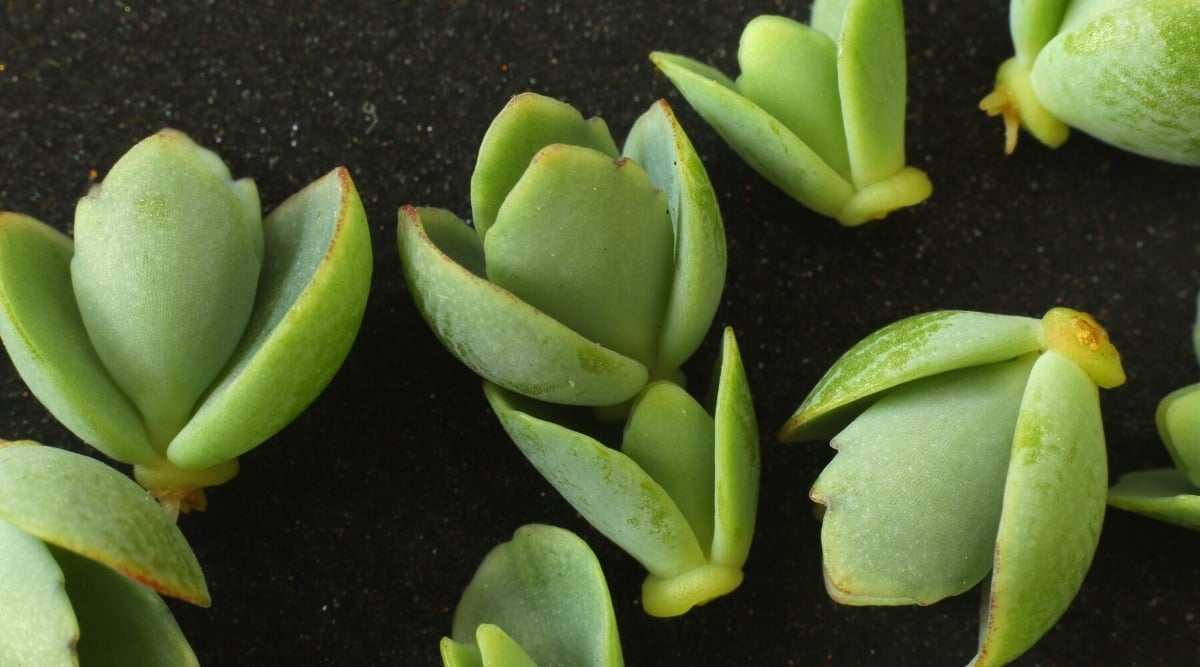

Understanding the planting depth, potting needs, sunlight and water requirements are crucial when growing Mother of Thousands plants both indoors and outdoors. It’s important to provide appropriate care to ensure their healthy growth and development.
Customize the watering schedule of your Mother of Thousands according to its pot and placement. Though these Kalanchoe plants are resilient to drought, they still need proper drainage like most succulents.
Indoors, watering every two weeks in the active growing season and every three weeks in winter is ideal. For outdoor potting, water the kalanchoe every 5-7 days due to quicker evaporation. Reduce watering to 1-2 weeks as temperatures drop.
During the dormant season, remember that less growth means lower water requirements. To prevent root rot, limit water intake during winter months.
Soil
Ensure well-draining soil for this succulent. Opt for a commercial succulent mix for potting. Avoid peat-based mixes that retain excess water. For a customized blend, enrich regular potting mix with coarse sand or additives like perlite, pumice, or vermiculite to maintain soil aeration.
Climate and Temperature
Resilient within zones 9-11, outdoor exposure is suitable in these regions year-round. Protect the plants from temperatures dipping below 40° as freezing is detrimental. The ideal temperature range for these succulents is 65°-75°, ensuring a pleasant environment indoors in well-lit spots.
To stimulate flowering, provide adequate lighting, possibly moving them outdoors for a period during warmer months.
Fertilizing
With minimal fertilizer needs, refrain from application in fall and winter. In the growth phase from March to September, consider fertilizing every 3-4 months with a diluted balanced liquid fertilizer. Alternatively, these efficient plants can thrive without additional nutrients if left unfertilized.
Pruning and Maintenance
For a healthy Bryophyllum plant, proper maintenance is vital. Keeping it in a clay pot, periodic pruning, and overseeing the overall plant health will lead to its optimal growth.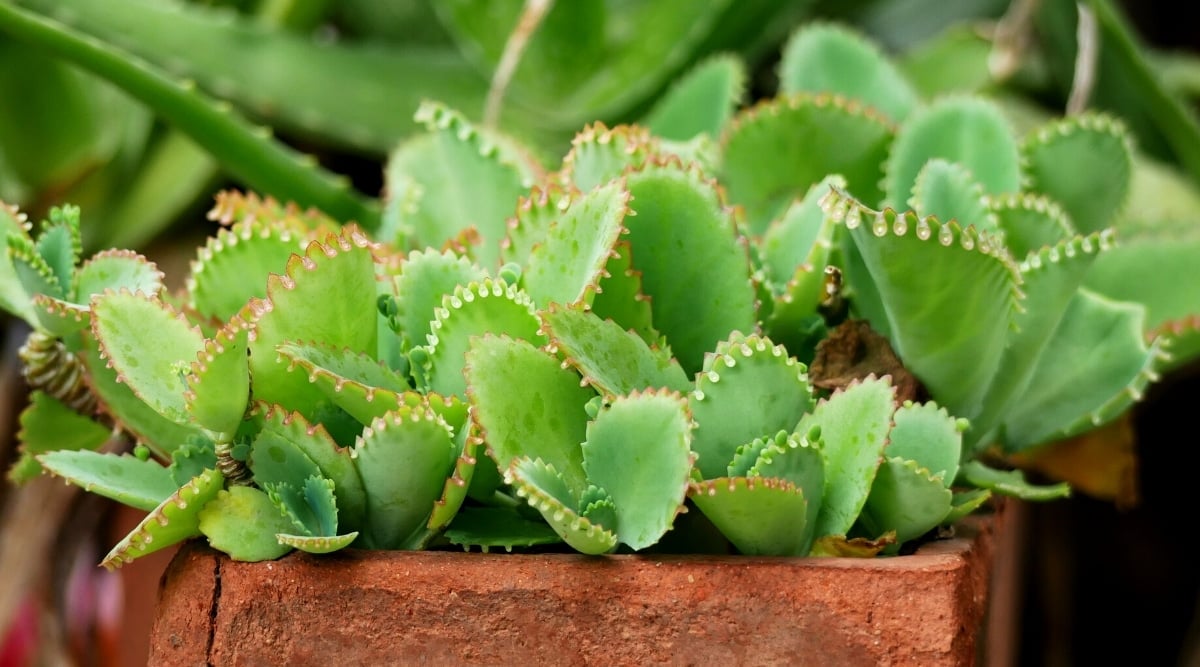
In terms of maintenance, Mother of Thousands is incredibly easy to care for. Maintaining moderate watering levels and minimal fertilization is all that’s required. Additionally, there is no urgent need for pruning, unless it involves removing brown or injured leaves.
Pruning damaged foliage can be performed at any time, either by pinching or cutting off the affected leaves with a clean, sharp tool. Should your plant start to look leggy, simply trim the top portion above a large leaf during spring to stimulate branching and fill any empty spaces.
Toxicity
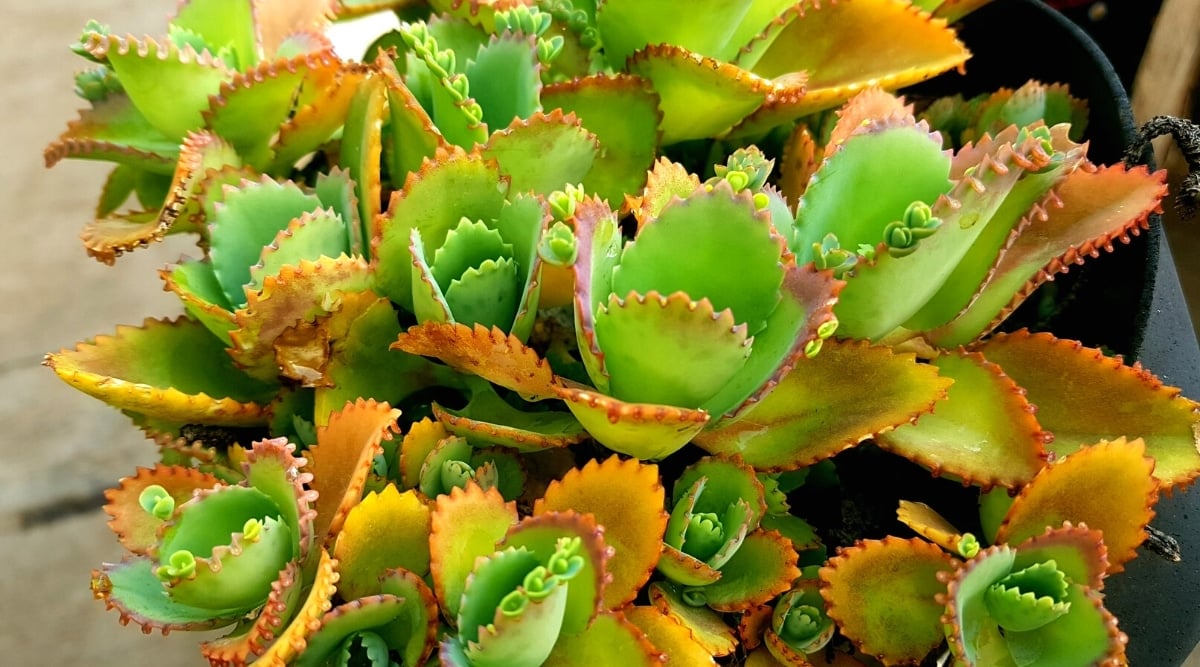
All parts of the plant contain toxins harmful to humans and animals, necessitating their placement out of reach of children and pets if ingestion is a concern.
Popular Varieties
The majority of recognized Mother of Thousands varieties are the result of hybridization between K. daigremontiana and other kalanchoe species. Here are three gorgeous hybrid varieties for you to consider.
Pink Butterflies

Scientific Name: Kalanchoe ‘Pink Butterflies’
- Bloom Time: Winter
- Geographical Location: Madagascar
- Sun Exposure: Bright Indirect Light
- Plant Zone: 9-11
This captivating hybrid, a cross between K. daigremontiana and K. delagoensis, boasts a variegated appearance. Standing tall and slender with narrower leaves, the plantlets exhibit a striking pink hue resembling a cluster of miniature butterflies.
The variegation is due to lower chlorophyll levels, causing pink coloration in parts with reduced chlorophyll, similar to the Pink Princess Philodendron phenomenon.
While somewhat delicate and challenging to cultivate, with patience and healthy plantlets, nurturing your own Pink Butterflies Kalanchoe is achievable.
Houghtonii
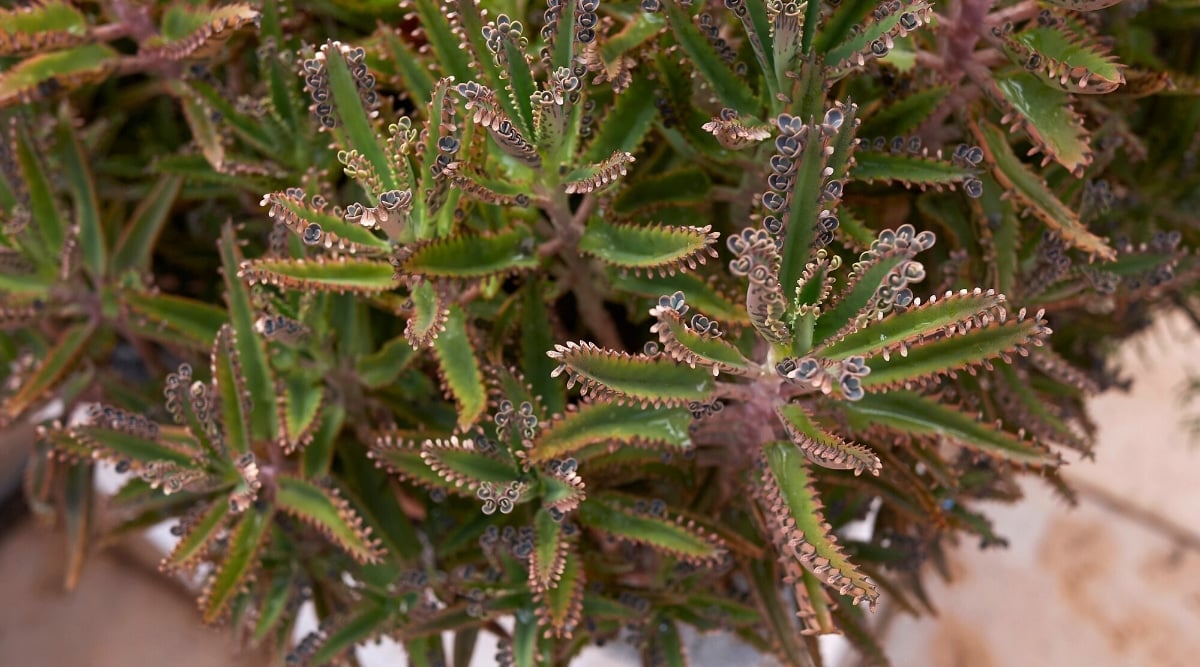
Scientific Name: Kalanchoe x Houghtonii
- Bloom Time: Winter
- Geographical Location: Madagascar
- Sun Exposure: Bright Indirect Light
- Plant Zone: 9-11
Another hybrid involving K. daigremontiana and K. delagoensis, Houghtonii is characterized by a narrower leaf base and easier propagation and care compared to Pink Butterflies.
With elongated thin stems and grayish-green leaves adorned with dark brown streaks, this variety, often referred to as Mother of Millions, produces numerous smaller leaves and plantlets, giving the impression of an abundance of tiny plantlets on each leaf.
Laetivirens
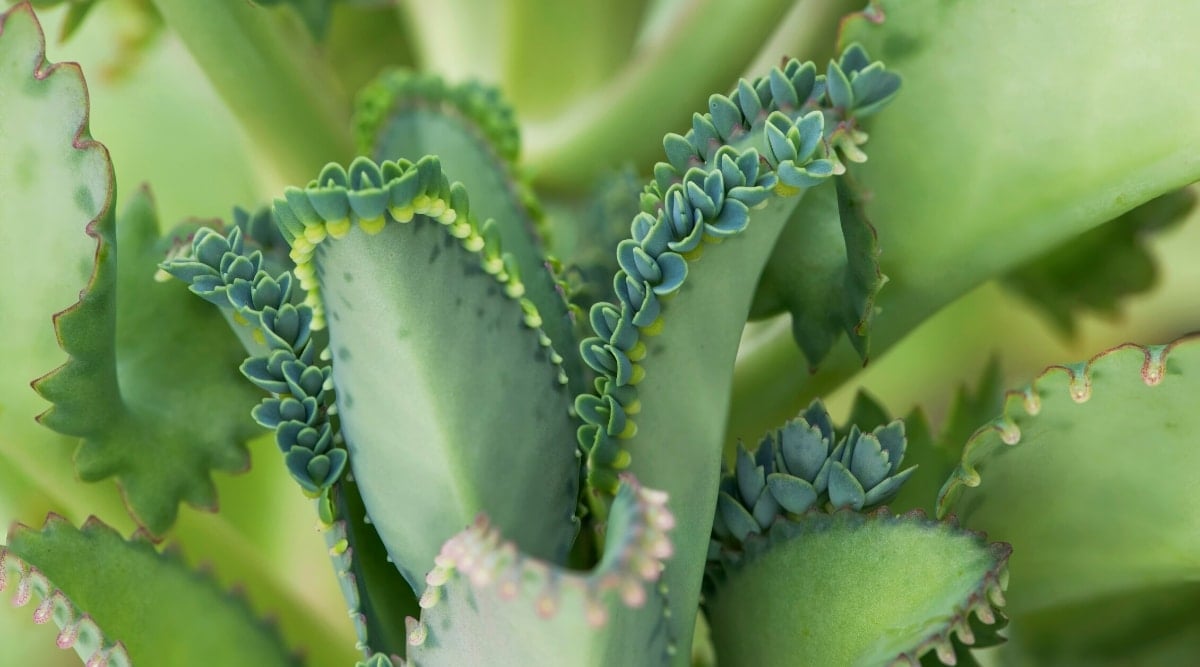

Scientific Name: Kalanchoe x laetivirens
- Bloom Time: Early Spring
- Geographical Location: Madagascar
- Sun Exposure: Bright Indirect Light
- Plant Zone: 9-11
Presenting another delightful hybrid utilizing K. laxifloira (Brophyllum crenatum), this variation features large, slightly curved leaves resembling an alligator’s open mouth, complete with tiny plantlets mimicking teeth.
The moniker Laetivirens (lushly green) signifies the entirely green leaves of this hybrid, deviating from the typical variegated patterns found in most hybrids.
The plantlets exhibit a deeper green hue compared to the parent plant, which boasts a vibrant, bright green color. Some specimens may even showcase a bluish tint on both leaves and plantlets. This hybrid produces bell-shaped blooms in white or yellow tones, occasionally tinged with pink.
Pests and Diseases
While kalanchoe plants typically do not suffer extensively from pests and diseases when kept indoors, it’s essential to monitor them for potential issues. Adhering to proactive measures like inspecting new plants can prevent the spread of pests to established plants.
During encounters with pest infestations or diseases, the initial step involves isolating the affected plant to prevent further propagation onto nearby plants.
Aphids
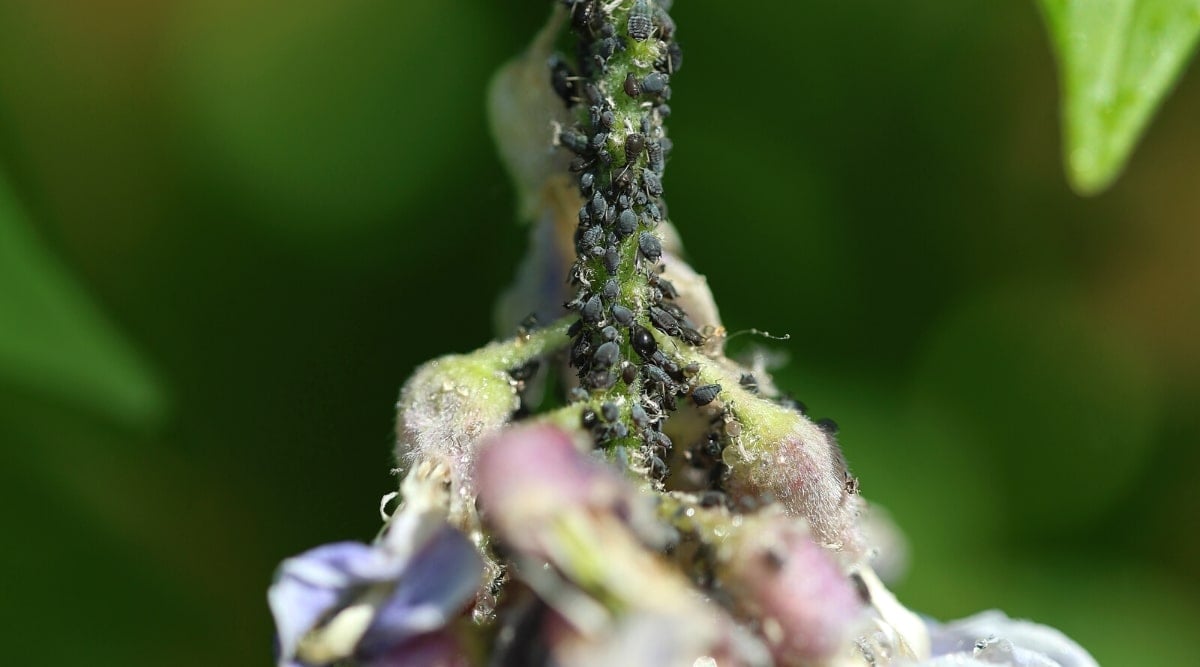
Aphids are minuscule creatures with soft bodies that feast on plant sap, particularly targeting kalanchoe plants due to their succulent foliage.
Visible to the naked eye, aphids may not be apparent until plant damage becomes noticeable. Symptoms may include leaves curling or shriveling, indicating the presence of these pests, which can appear in green, black, or red colorations.
To combat aphids, treat the plant with a soapy water or neem oil solution. This method obstructs aphid respiration, effectively suffocating them. Reapplication may be necessary if more eggs hatch, with residue removal conducted manually using a soft cloth.
Scales
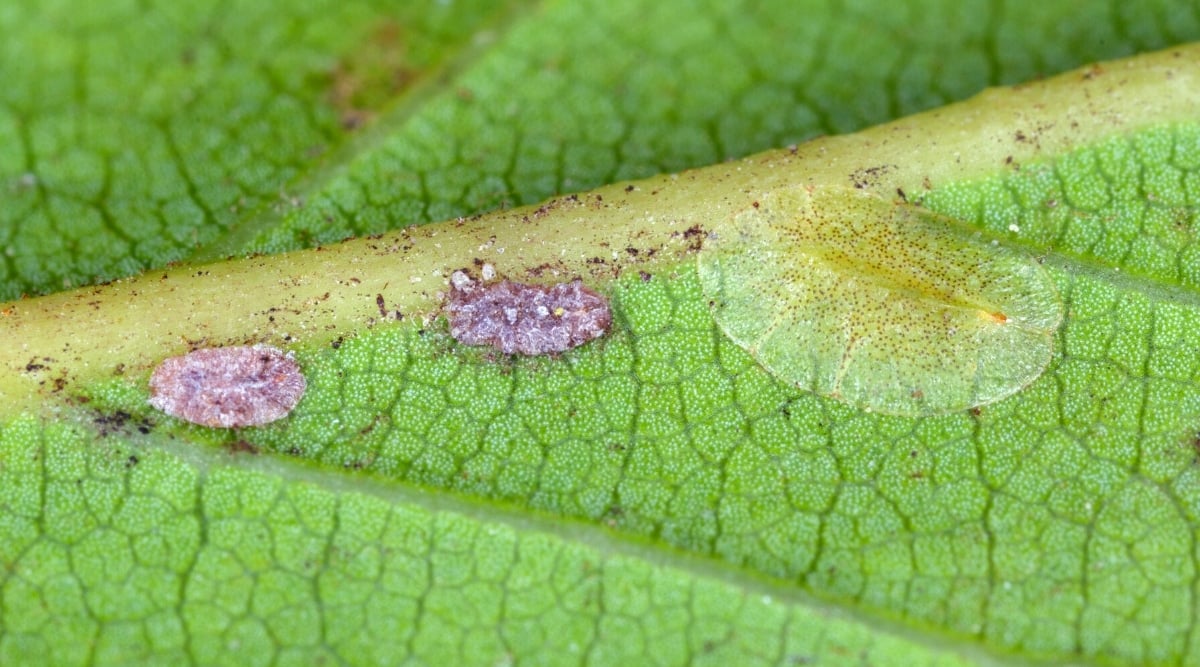
Scales, small brown armored insects, find kalanchoe plants appetizing. Young scales may move around, but as they mature, they tend to stay in one location, feeding on the plant.
If you observe yellowing leaves with small brown specks beneath, it indicates a scale infestation.
To eradicate scales, wipe the affected areas with a damp cloth or utilize neem oil for more severe cases. Alternatively, use a q-tip soaked in alcohol for targeted treatment.
Mealybugs
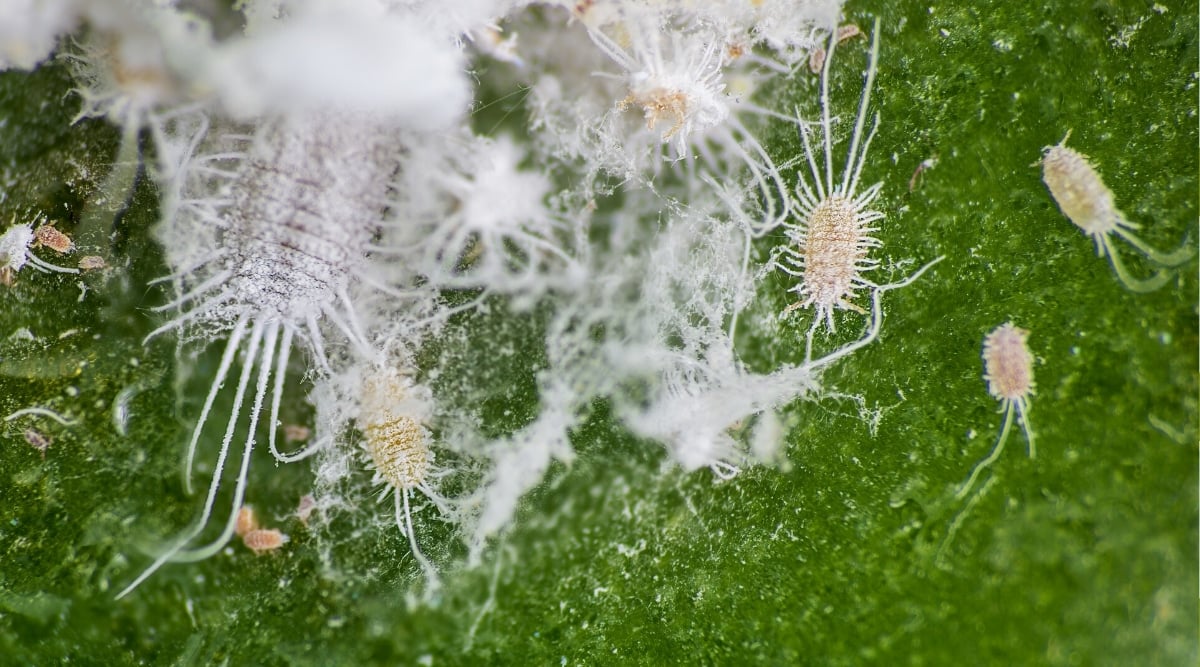
Mealybugs, white insects that reside under leaves and consume plant juices, can be eradicated by using an alcohol-soaked q-tip or resorting to pesticides for severe infestations.
Root Rot

One primary issue faced by kalanchoe plants is fungal root rot, specifically Thelaviopsis root rot, also known as black root rot. This fungal disease can lead to badly rotted roots and stunted plant growth, eventually resulting in the plant’s demise if not addressed promptly. It typically arises in cool, wet conditions, characterized by a black and cracked central stem with wilting and dropping leaves.
The key culprit behind root rot is excessive watering. To combat this, treating the plant roots with benzimidazole fungicides and repotting can boost its chances of survival. In severe cases of root rot, it’s advisable to dispose of the infected plant to prevent the spread of the fungus to others.
Powdery Mildew

Another common issue for this succulent is powdery mildew, which results from excess moisture, particularly in the air. While this problem is less severe and treatable, the environmental conditions must be altered to prevent its recurrence. Kalanchoe plants thrive in low humidity, so it’s advisable to avoid placing them in humid spaces like bathrooms.
Final Thoughts
Mother of Thousands is an ideal plant that flourishes indoors in bright, indirect light with minimal watering approximately once a week. Its large and beautiful leaves are a sight to behold, especially if you witness its rare blooming. When planting this specimen outdoors, exercise caution as its rapid growth can outcompete native species. Despite the care needed, this intriguing plant is a must-have for any gardening enthusiast!

